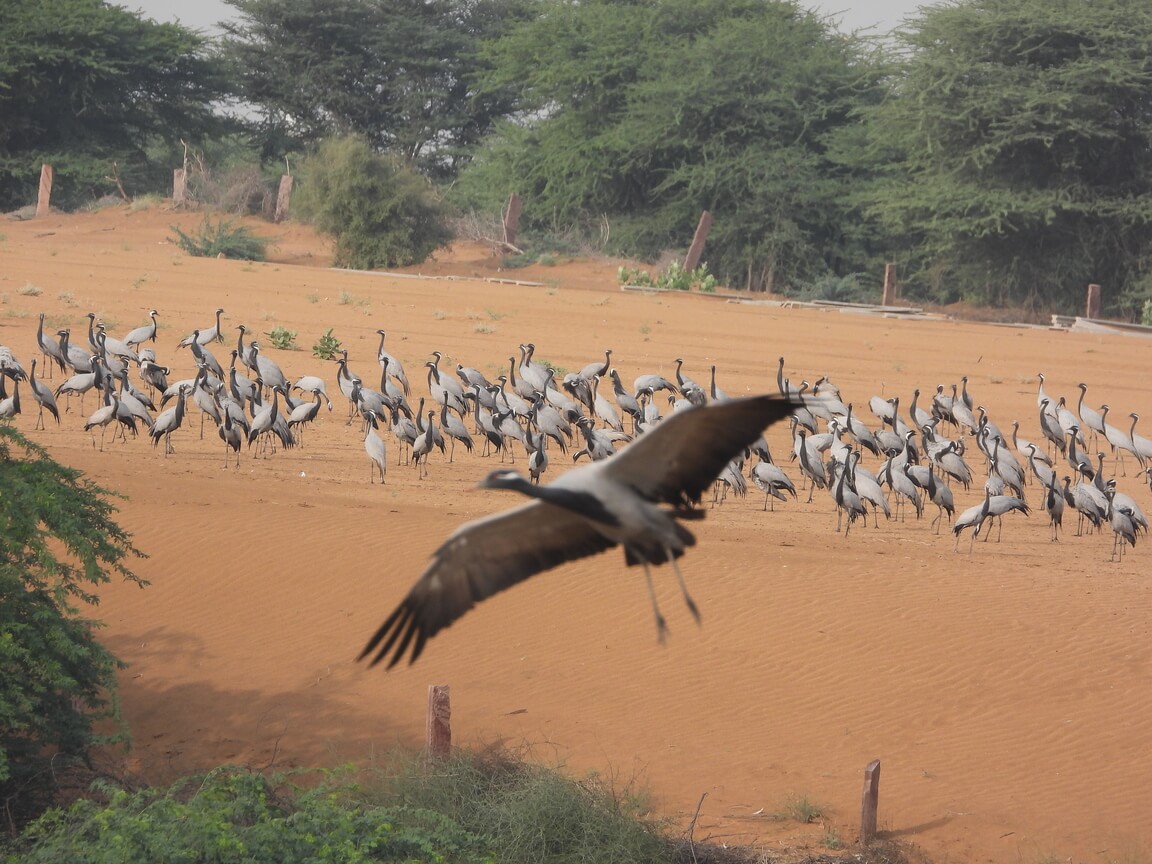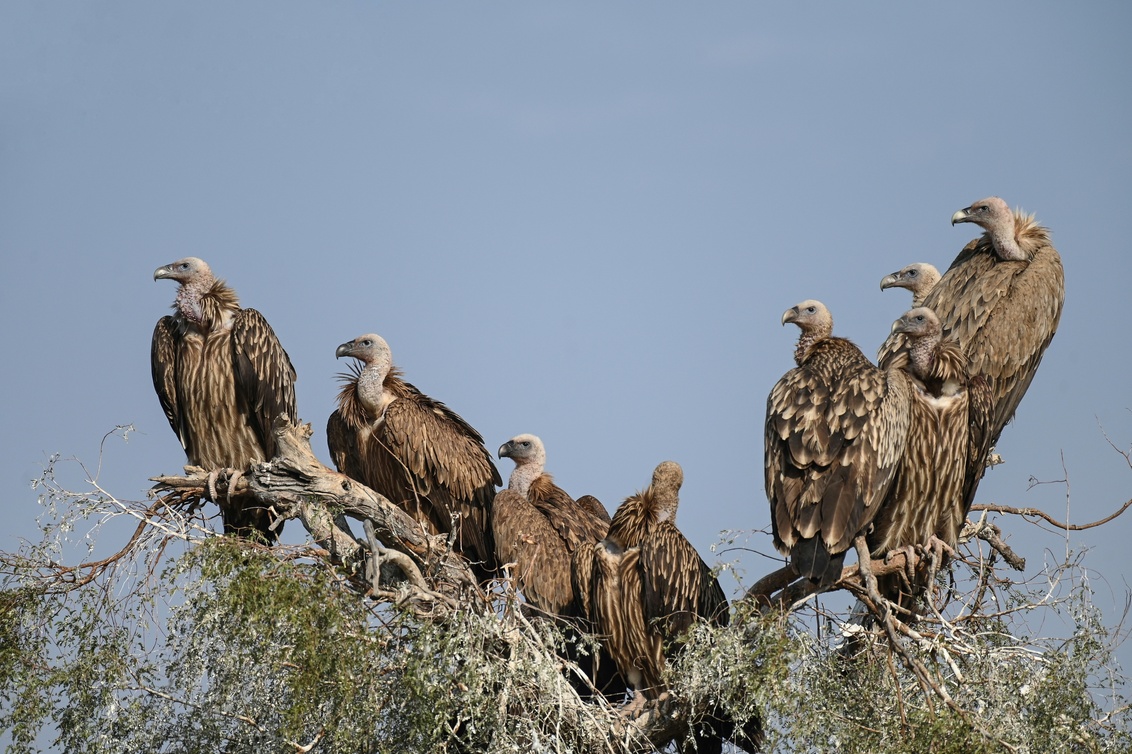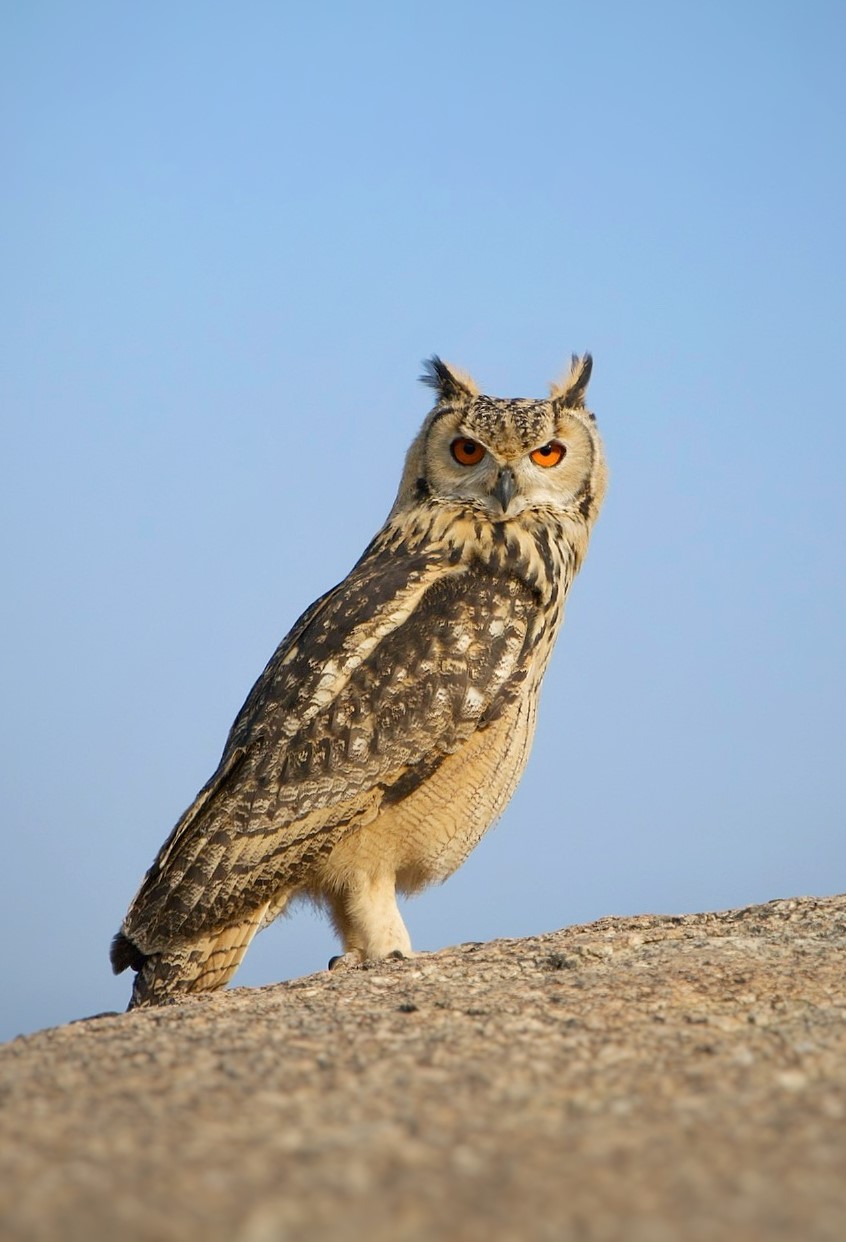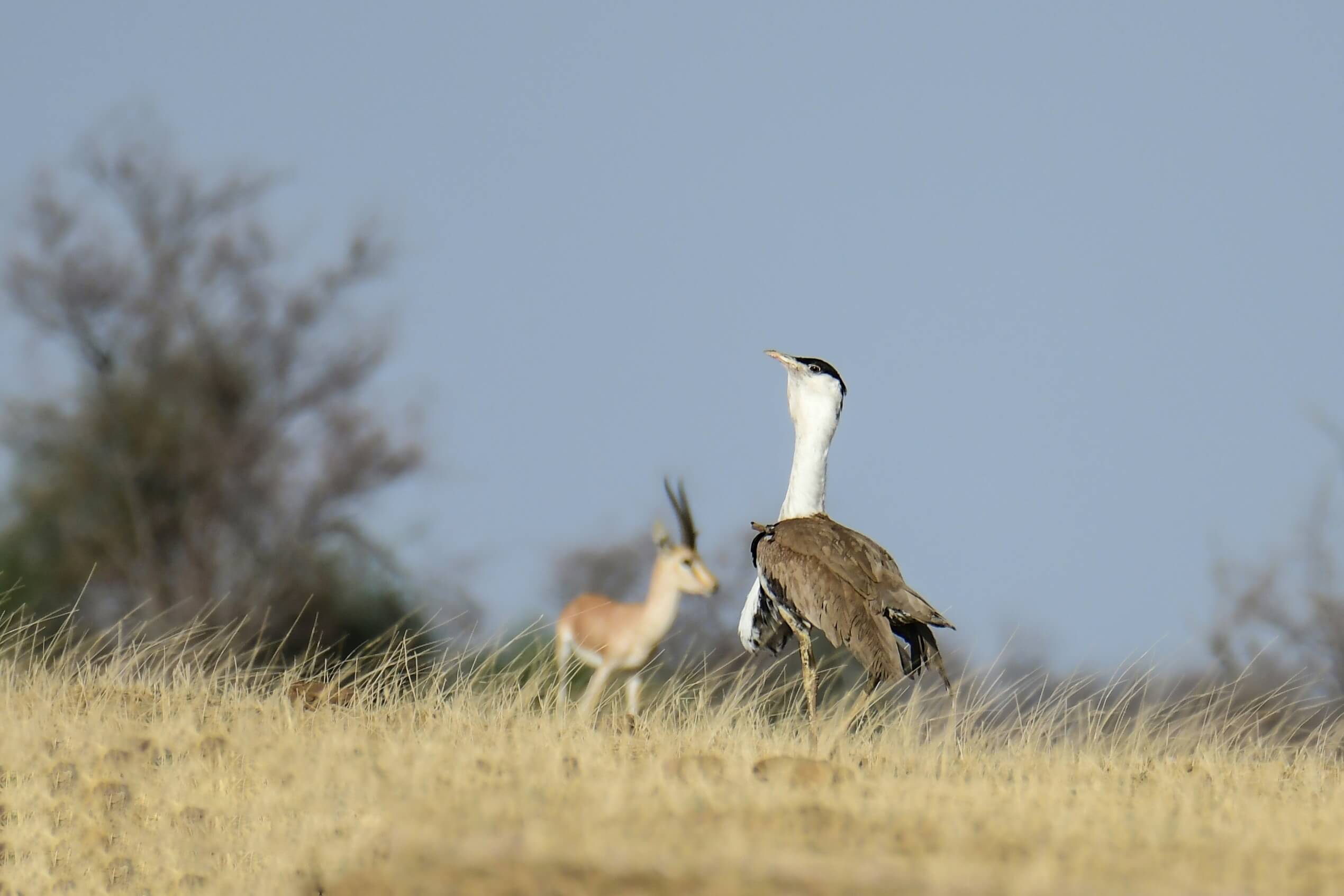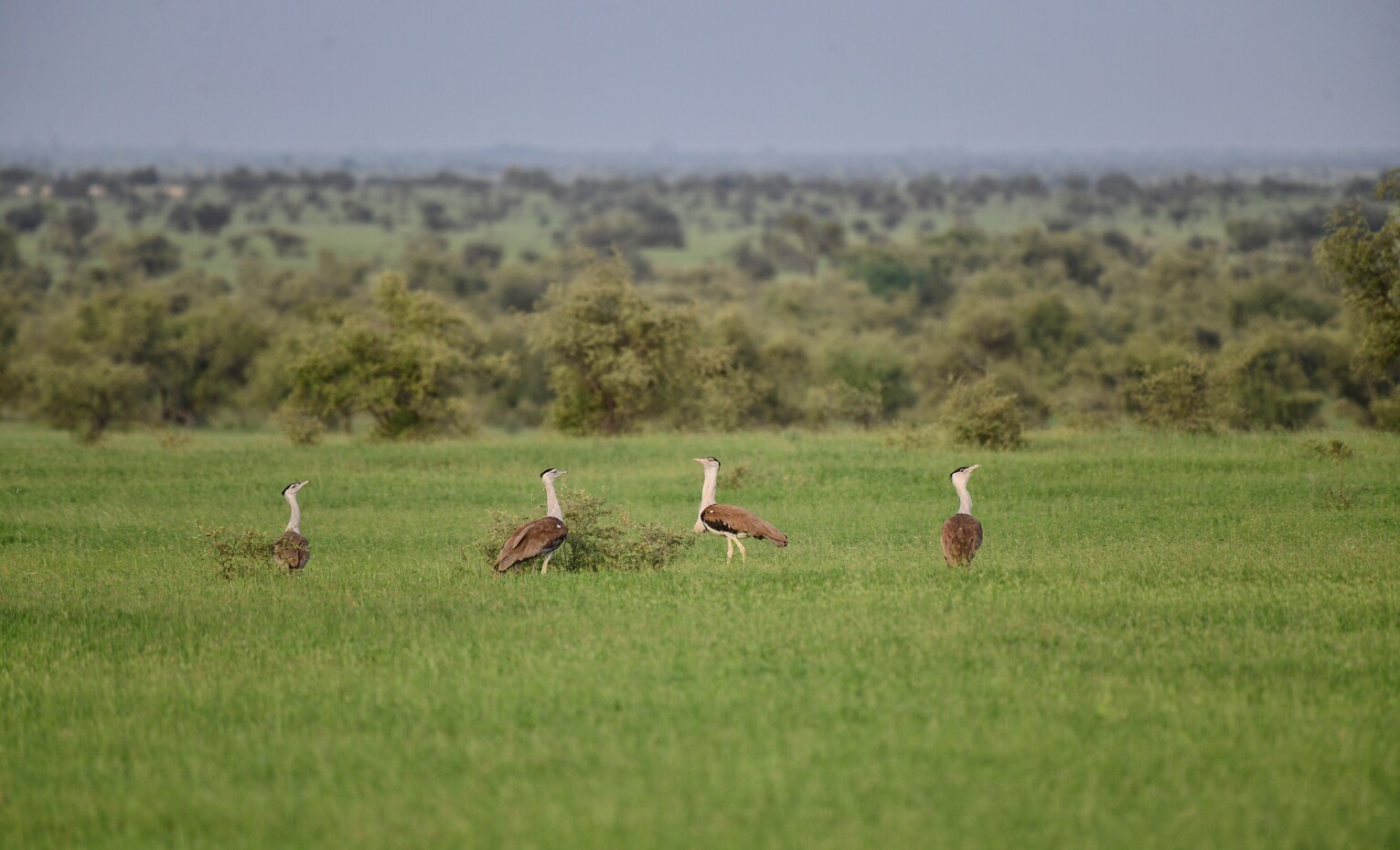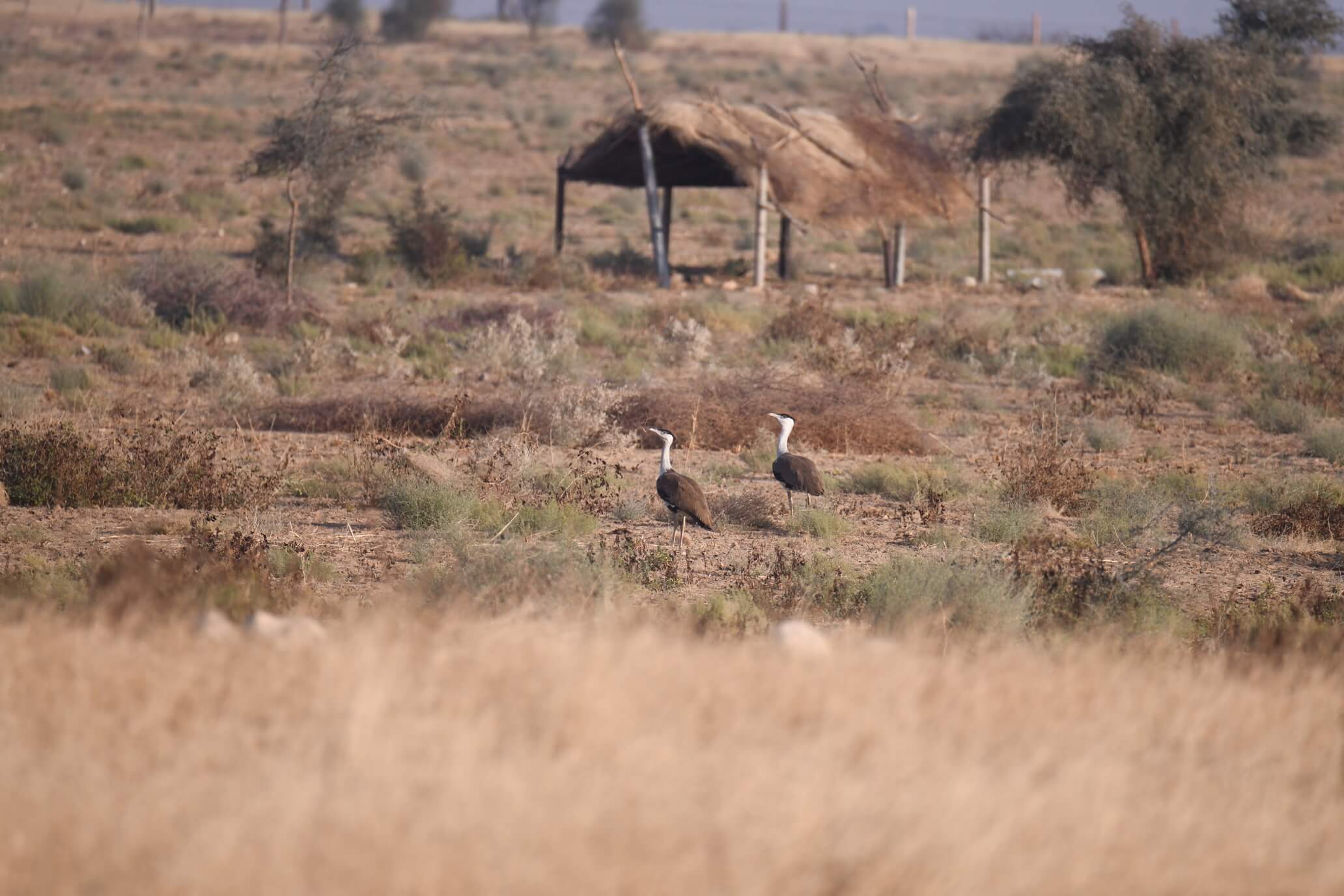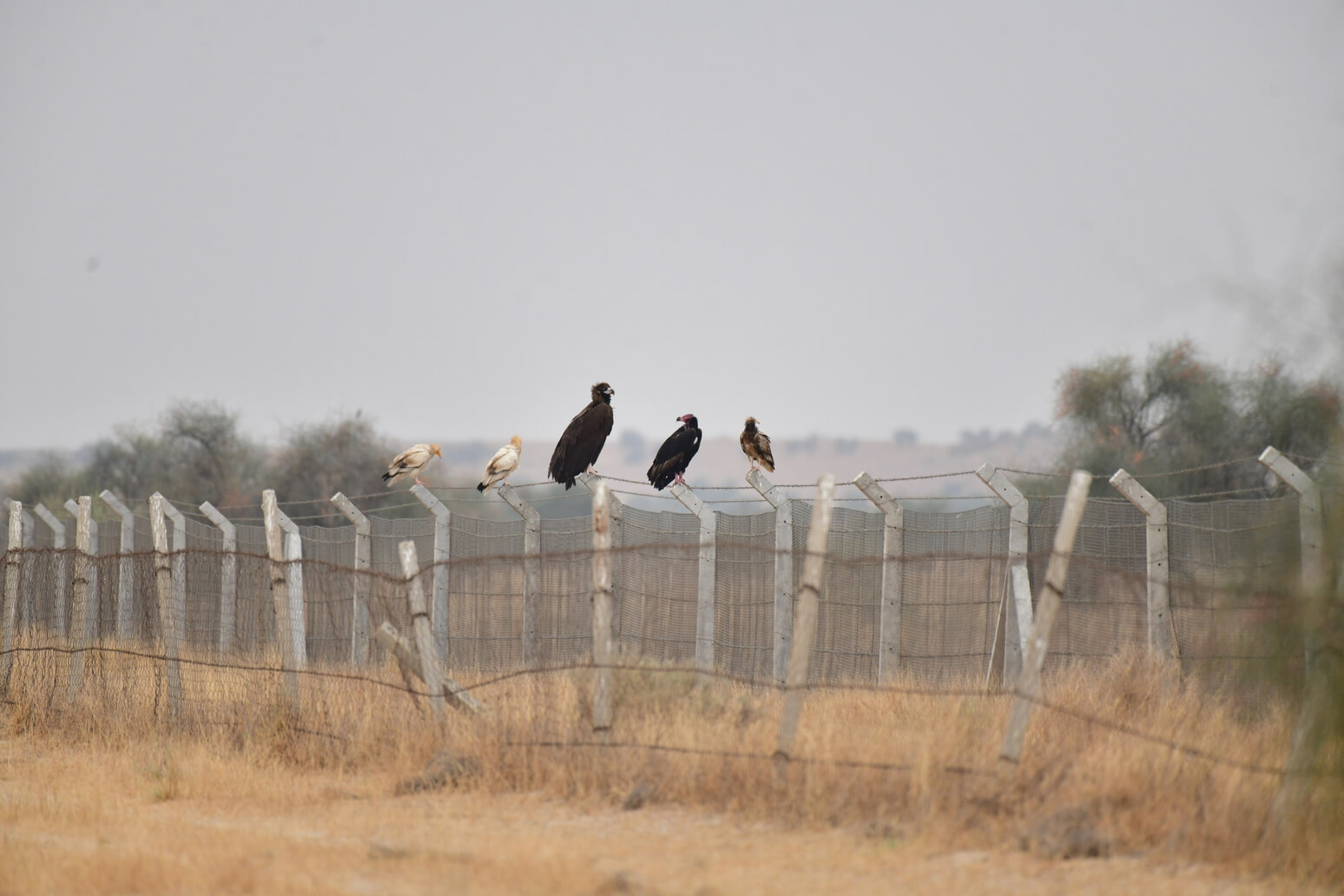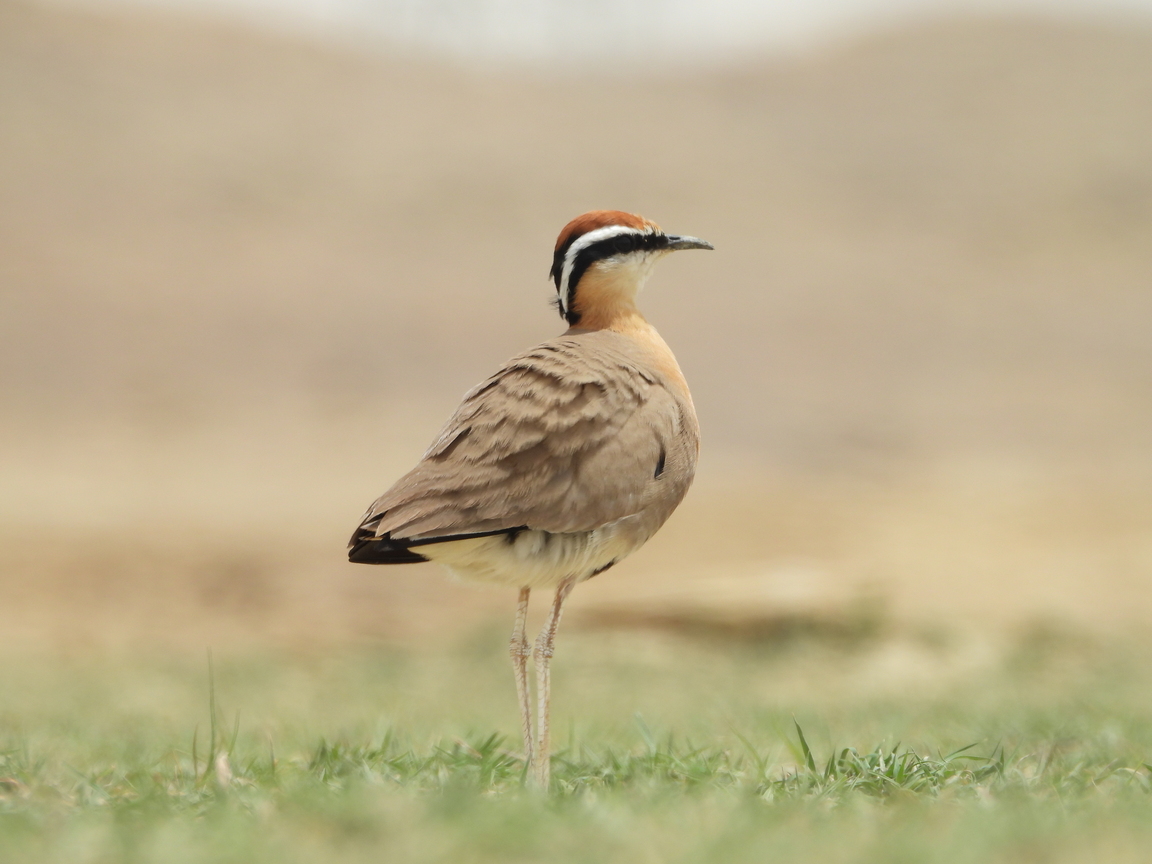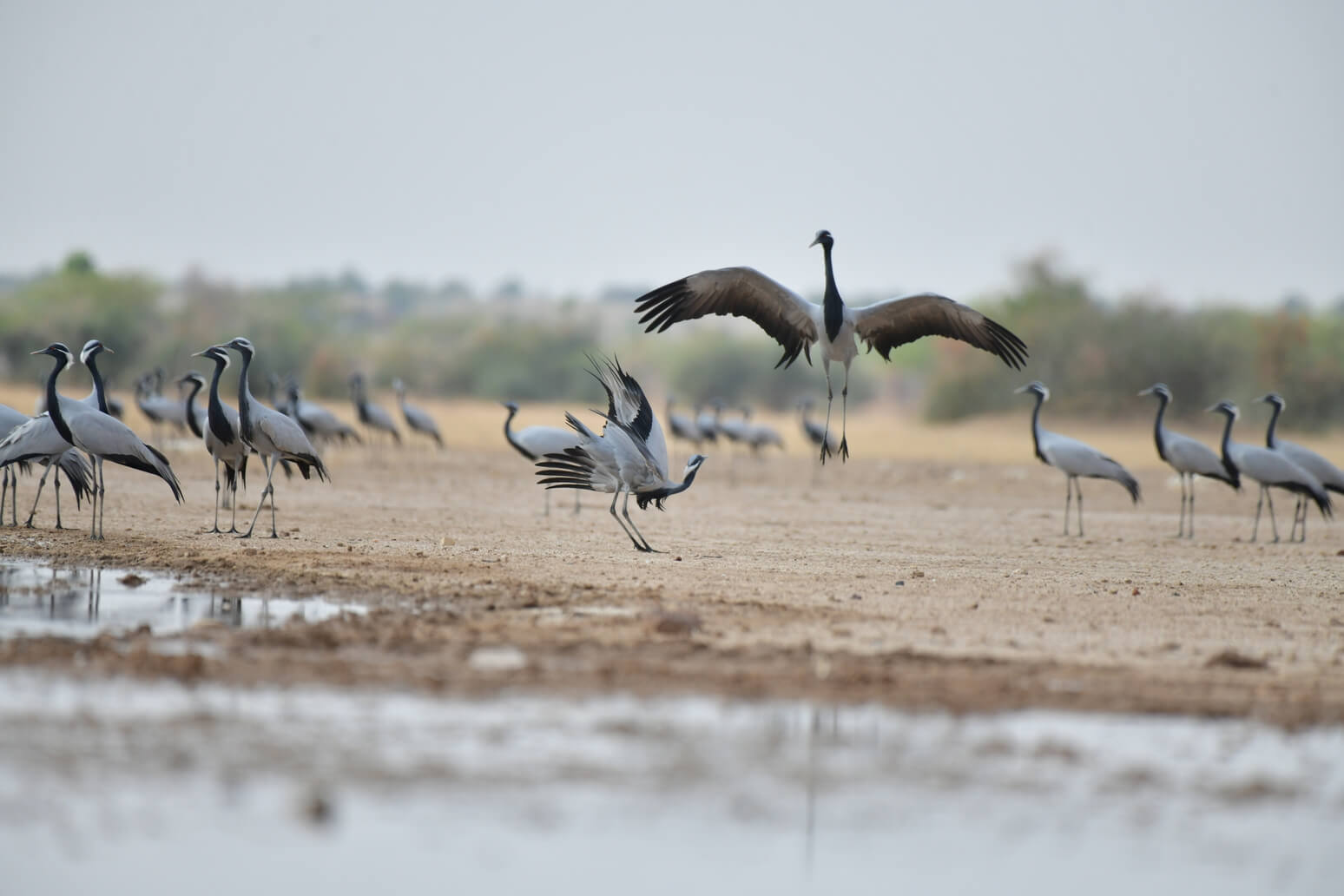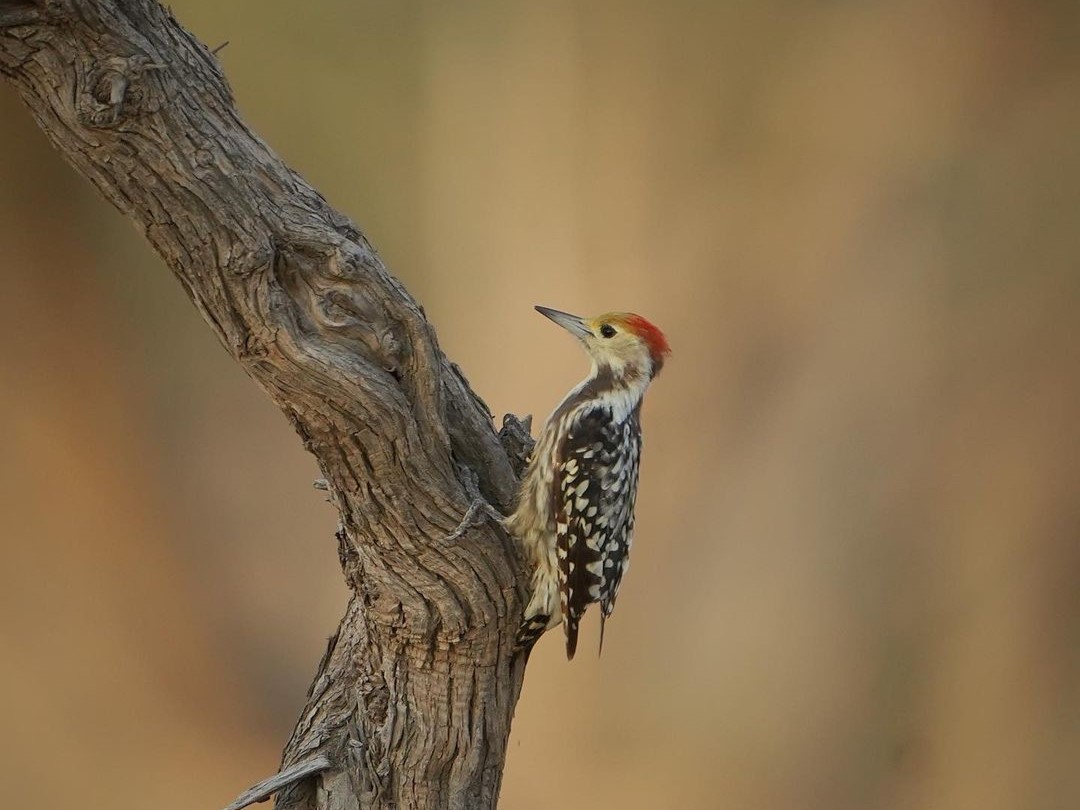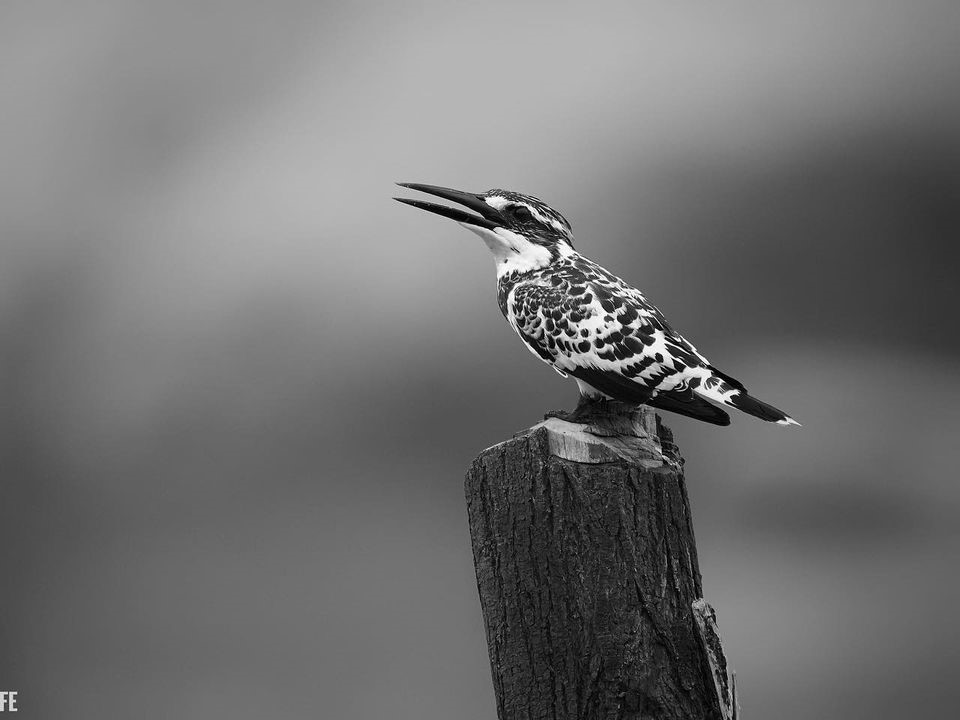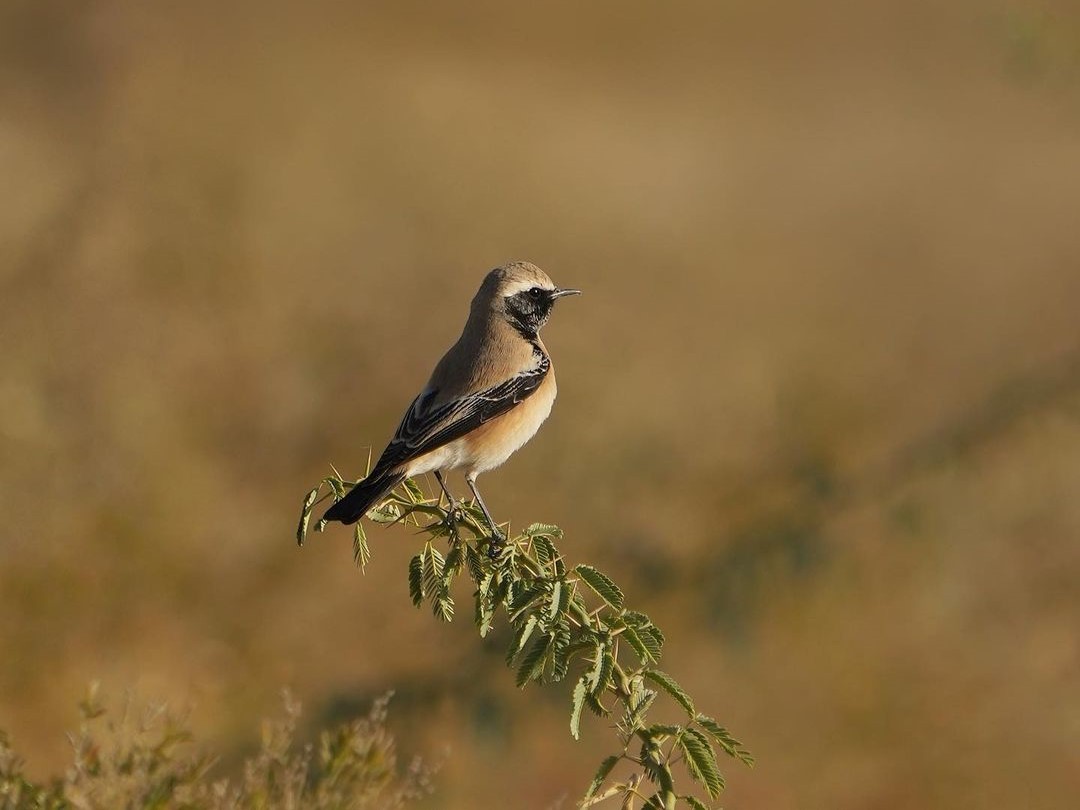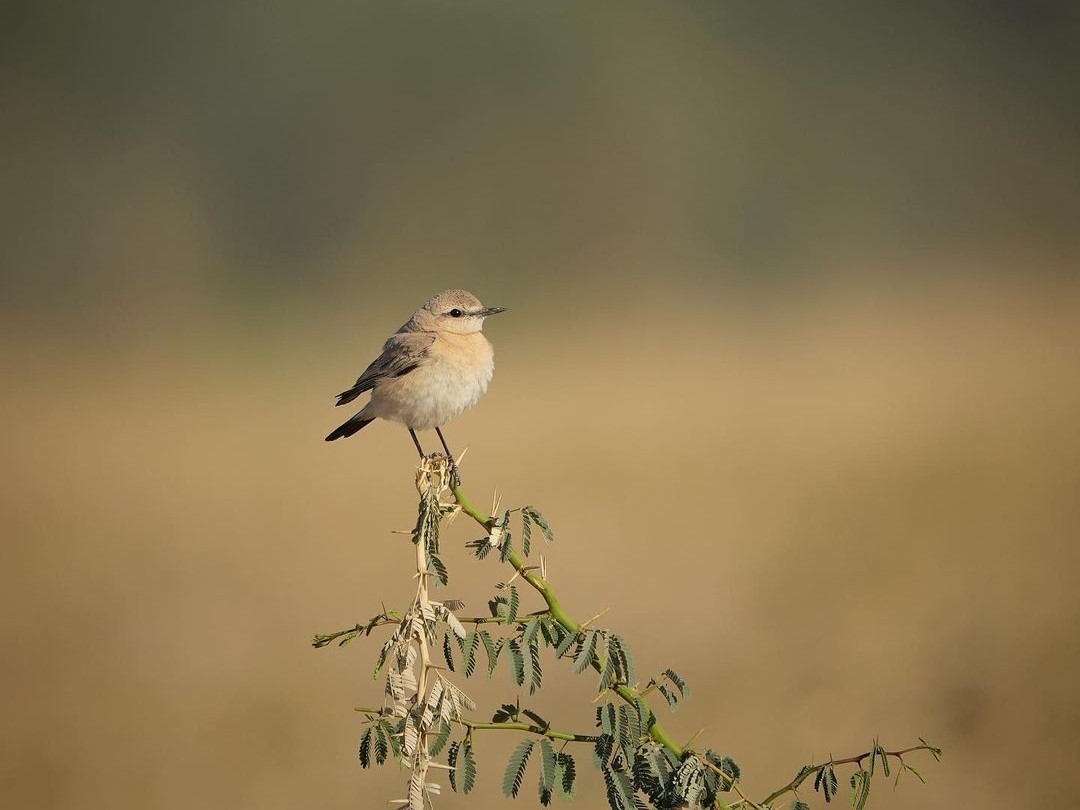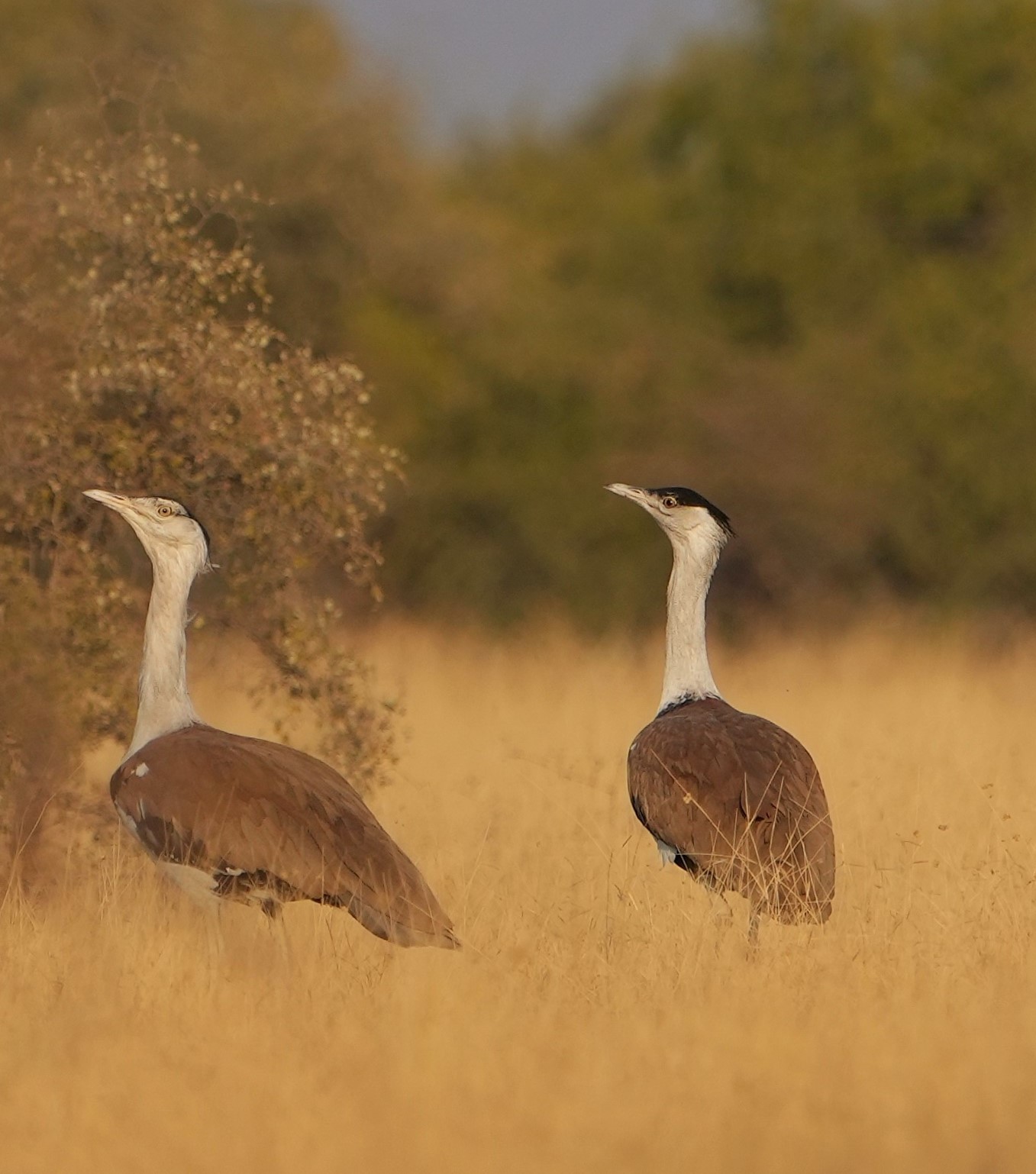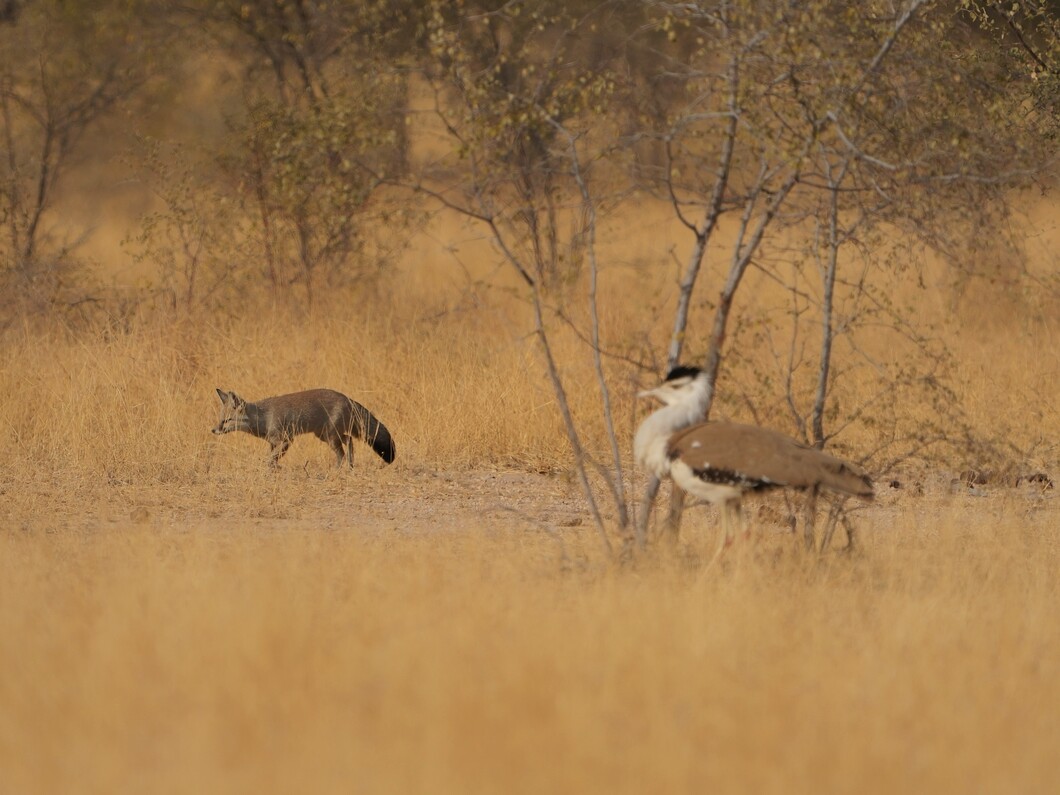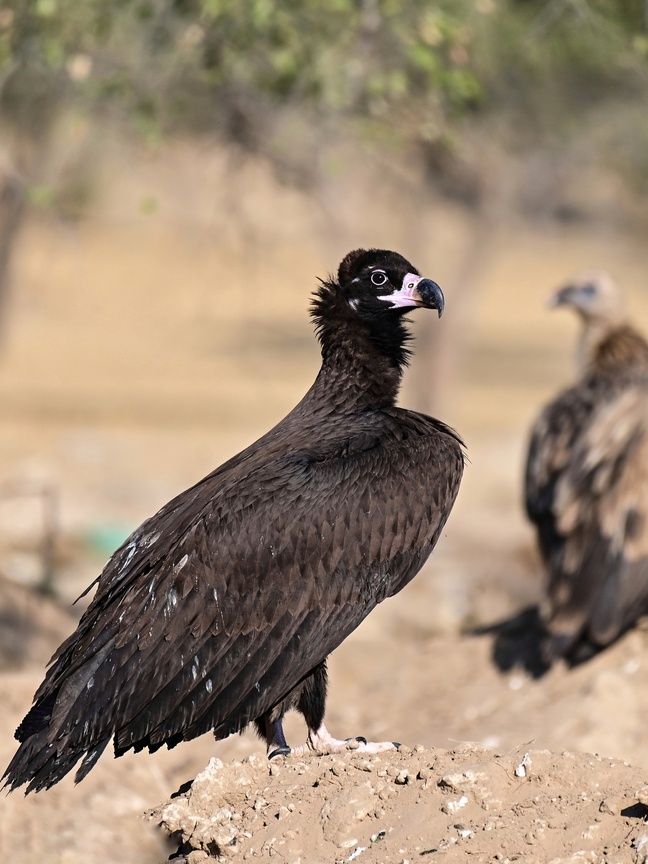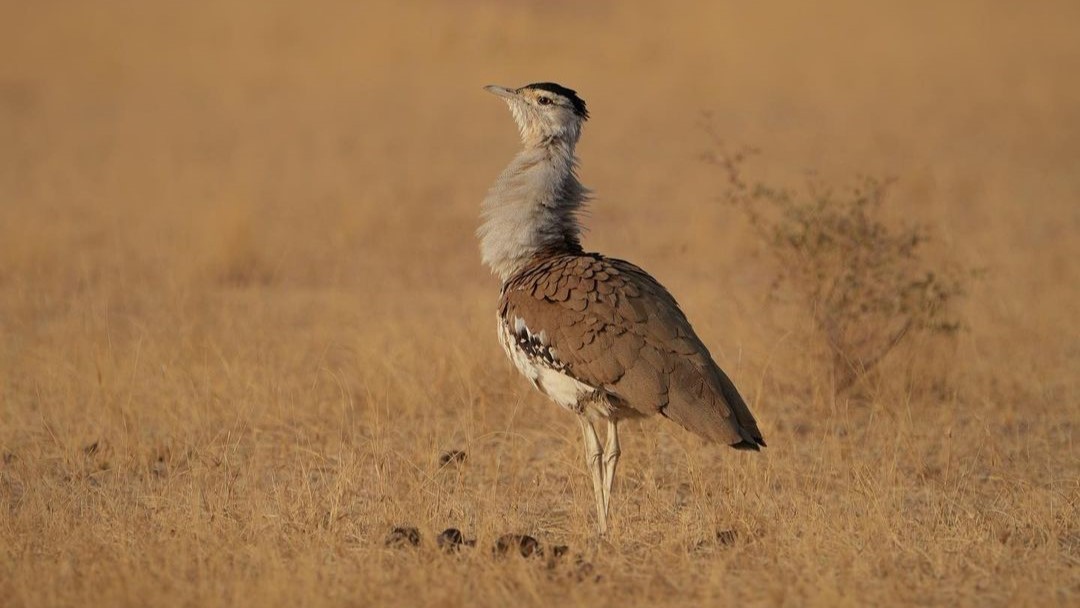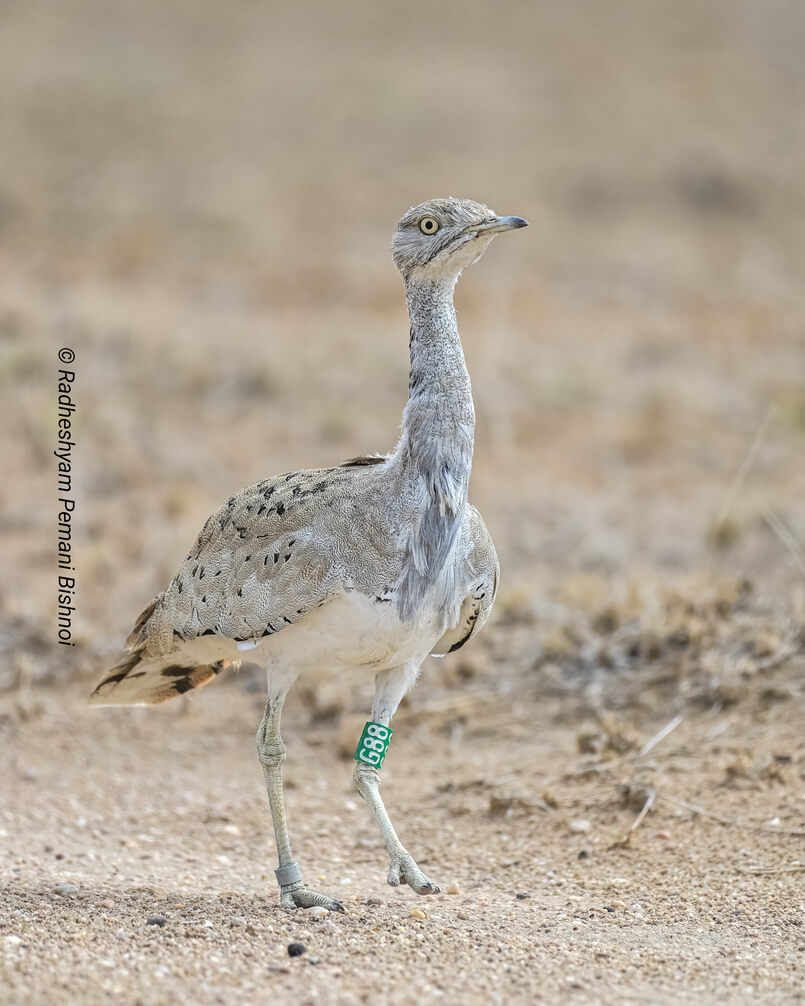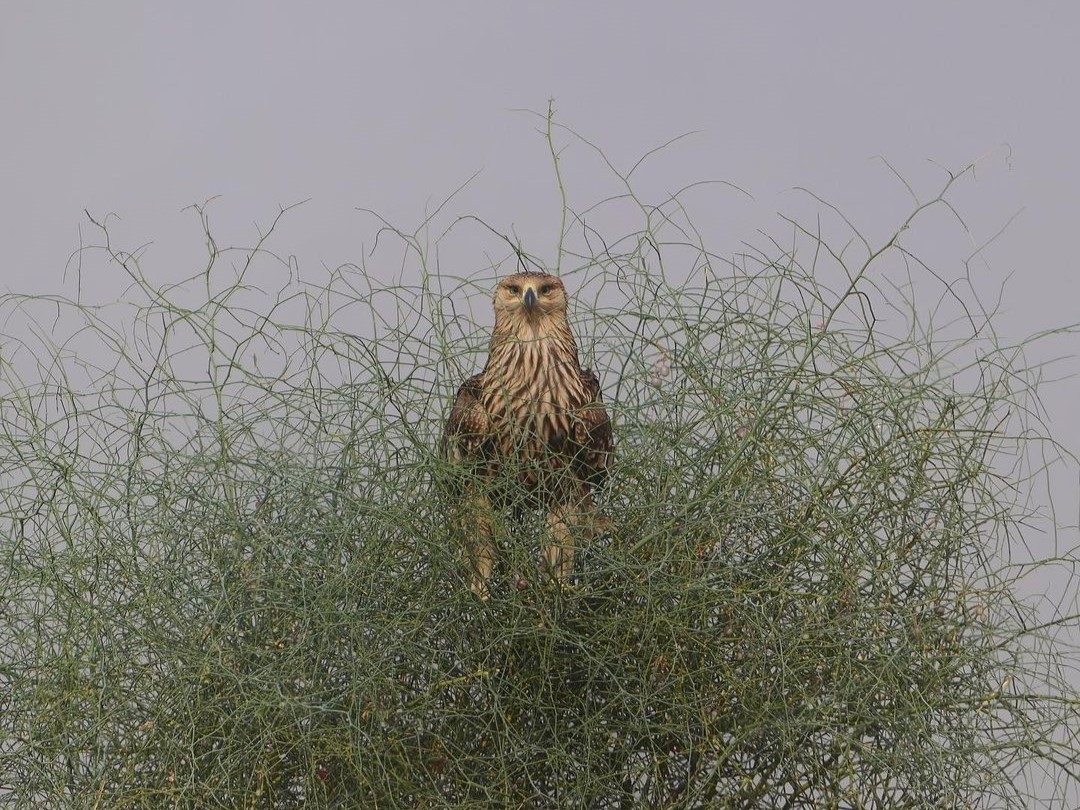Desert National Park in Rajasthan, India, is a unique and captivating destination for birdwatching enthusiasts. This arid and seemingly desolate landscape, covering approximately 3,162 square kilometers, offers a surprising diversity of avian life. Birding in Desert National Park can be a rewarding experience, with numerous subheadings that provide insight into this fascinating ornithological haven.
Birds photo's form radhe's lens
- 1. Arid Avian Oasis Despite its harsh desert environment, Desert National Park serves as a vital refuge for a wide variety of bird species. The park's diverse ecosystems, including sand dunes, rocky terrain, and thorn scrub, attract a wealth of avian life. Birders visiting this region can expect to encounter both resident and migratory species, making it a year-round destination for birdwatching.
- 2. Migratory Marvels One of the most remarkable aspects of Desert National Park is its role as a critical stopover for migratory birds along the Central Asian Flyway. During the winter months, the park becomes a temporary home to thousands of migratory species. Among the notable visitors are Demoiselle Cranes and various waterfowl species, making the park a spectacle of avian diversity.
- 3. Iconic Endemics Desert National Park boasts several bird species that are endemic to this region, making it a must-visit for serious birdwatchers. The Great Indian Bustard and the Indian Courser are two iconic endemics found here. Their survival in this harsh desert landscape underscores the park's importance for the conservation of these unique species.
- 4. Varied Habitats The park's topography offers a range of habitats for birds, from sand dunes and salt flats to saline lakes and thorny shrubbery. Each habitat hosts its own set of bird species, making it possible to spot a wide array of birds in a single visit. Birdwatchers can explore these diverse ecosystems, each with its own charm and avian inhabitants.
- 5. Prime Photographic Opportunities Bird photography enthusiasts will find Desert National Park an ideal location to capture stunning shots of avian life against the backdrop of the desert landscape. The park's unique lighting conditions and the contrast between the vibrant plumage of birds and the arid surroundings create remarkable photo opportunities.
- 6. Conservation Efforts Desert National Park is not only a sanctuary for birds but also a testament to conservation efforts in India. The park's management focuses on preserving the fragile desert ecosystem and protecting its avian inhabitants. Understanding the conservation initiatives in place can deepen one's appreciation for the park's significance.
- 7. Best Birding Seasons While Desert National Park offers birdwatching opportunities year-round, the best time to visit for birding is during the winter months, from November to March. This period coincides with the arrival of migratory birds and offers pleasant weather for outdoor activities.
- 8.Radheshyam: The Expert Birding Guide When exploring the avian wonders of Desert National Park, there's no better companion than Radheshyam, a seasoned birding guide with an unrivaled knowledge of the park's birdlife. Radheshyam's expertise in identifying and locating birds, combined with his passion for conservation, ensures that every birding expedition with him is both educational and rewarding. Whether you're a novice or an experienced birder, Radheshyam's guidance enhances the birdwatching experience.
- 9.Diverse Bird Species Desert National Park is home to an impressive diversity of bird species, with over 250 documented in the region. In addition to the iconic Great Indian Bustard and Indian Courser, you'll encounter raptors like the Short-toed Eagle and Bonelli's Eagle, elegant waterbirds such as the Black-headed Ibis and Eurasian Spoonbill, and vibrant songbirds like the Indian Golden Oriole and Bluethroat. Each visit to the park unveils new avian delights, thanks to its diverse ecosystems.
- 10.Nocturnal Birding Adventures For those seeking unique birdwatching experiences, Desert National Park offers thrilling nocturnal birding opportunities. Radheshyam can lead you on nighttime excursions to spot elusive nightjars like Sykes's Nightjar and Indian Nightjar. These excursions provide a chance to witness the park's avian nightlife and observe the mysterious behaviors of nocturnal birds.
- 11.Bird Ringing Programs Participate in bird ringing programs conducted in collaboration with local conservation organizations. Radheshyam can facilitate your involvement in these programs, allowing you to learn about bird migration patterns and contribute to ongoing research efforts. It's a hands-on experience that deepens your understanding of the park's avian inhabitants.
- 12.Cultural Insights Beyond birdwatching, Radheshyam can introduce you to the rich cultural heritage of the region's indigenous communities. You'll gain insights into the harmonious relationship between these communities and the local birdlife. Radheshyam's storytelling skills bring to life the cultural significance of birds in the desert's folklore and traditions.
- 13.Birding Etiquette and Conservation With Radheshyam's guidance, you'll not only enjoy exceptional birding but also practice responsible birdwatching. He emphasizes the importance of birding etiquette, such as maintaining a respectful distance from nesting sites and minimizing disturbances to birds. Radheshyam is dedicated to instilling a sense of responsibility for bird conservation in every visitor he guides.
-
14.The Joy of Bird Calls
Birding in Desert National Park isn't just about sightings; it's also about the symphony of bird calls that fills the air. Radheshyam's keen ear can decipher the melodious calls of various species, enhancing your birdwatching experience. From the resonant calls of the Indian Peafowl to the haunting songs of the Oriental Turtle Dove, you'll develop an appreciation for the auditory delights of birding.
In conclusion, Desert National Park offers an enchanting world of birds waiting to be discovered. With Radheshyam as your guide, you'll embark on a birdwatching journey that combines expertise, conservation awareness, and cultural immersion, making it an unforgettable experience for bird enthusiasts of all levels.
CHECKLIST OF BIRDS
| Species | Season | Conservation Status |
|---|---|---|
| Great Indian Bustard | Resident | Critical Endangered |
| MacQueen Bustard | Winter | Rare |
| Trumpeter Finch | Winter | Least Concern |
| Desert Courser | Winter | Least Concern |
| Red Tailed Wheather | Winter | Least Concern |
| Rufous Tailed Scrub Robin | Passage | Least Concern |
| European Nightjar | Passage | Least Concern |
| Red Backed Shrike | Passage | Least Concern |
| Red Tailed Shrike | Passage | Least Concern |
| Isabline Shrike | Winter | Least Concern |
| Great Grey Shrike | Resident | |
| Bay Backed Shrike | Passage | Least Concern |
| European Roller | Passage | Least Concern |
| Blue Checked Bee Eater | Passage | Least Concern |
| Desert Lark | Winter | Least Concern |
| Greater Hoopoe Lark | Winter | Least Concern |
| Bimaculted Lark | Winter | Least Concern |
| Short Toed Lark | Resident | Least Concern |
| Created Lark | Resident | Least Concern |
| Oriental Sky Lark | Winter | Least Concern |
| Rufous Tailed Lark | Passage | Least Concern |
| Laggar Falcon | Resident | Near-threatened |
| Merlin Falcon | Winter | Near Threatened |
| Saker Falcon | Winter | Near Threatened |
| Common Kestrel | Winter | Near Threatened |
| Lesser Kestrel | Winter | Near Threatened |
| Long Legged Buzzard | Winter | Near Threatened |
| Common Buzzard | Winter | Near Threatened |
| White Eyed Buzzard | Passage | Near Threatened |
| Tawny Eagle | Resident | Near Threatened |
| Steepe Eagle | Winter | Near Threatened |
| Imperial Eagle | Winter | Near Threatened |
| Spotted Eagle | Winter | Near Threatened |
| Golden Eagle | Winter | Rare |
| Booted Eagle | Winter | Rare |
| Egyptian Vulture | Resident | Least Concern |
| White Rumped Vulture | Winter | Critical Endangered |
| Red Headed Vulture | Resident | Critical Endangered |
| Indian Vulture | Winter | Critical Endangered |
| Cinereous Vulture | Winter | Near Threatened |
| Eurasian Griffon Vulture | Winter | Near-threatened |
| Himalayan Vulture | Winter | Near Threatened |
| Montagu's Harrier | Passage | Near Threatened |
| Pallid Harrier | Winter | Near Threatened |
| Marsh Harrier | Winter | Near Threatened |
| Hen Harrier | Winter | Near Threatened |
| Short Toed Snake Eagle | Passage | Least Concern |
| Spotted Fly Catcher | Passage | Least Concern |
| Asian Desert Warbler | Winter | Near-threatened |
| Plain Leaf Warbler | Resident | Near Threatened |
| Orphean Warbler | Resident | Least Concern |
| Hume's Warbler | Winter | Least Concern |
| Booted Warbler | Winter | Near Threatened |
| Sykes's Warbler | Winter | Least Concern |
| Common Chiffchaff | Resident | Least Concern |
| Lesser Whitethroat | Winter | Near Threatened |
| Rock Eagle Owl | Winter | Near Threatened |
| Short Eared Owl | Winter | Near Threatened |
| Yellow Crowned Woodpecker | Winter | Near Threatened |
| Indian Roller | Winter | Least Concern |
| White Bellied Drongo | Winter | Least Concern |
| Grey Necked Bunting | Winter | Least Concern |
| Red Headed Bunting | Winter | Least Concern |
| Black Headed Bunting | Winter | Least Concern |
| Rufous Fronted Prinia | Winter | Least Concern |
| Jungle Prinia | Winter | Least Concern |
| Streak Throated Swallow | Winter | Least Concern |
| Indian Courser | Winter | Least Concern |
| Punjab Raven | Winter | Near Threatened |
| Bonelli's Eagle | Winter | Near Threatened |
| Grey Francolin | Resident | Least Concern |
| Common Quail | Resident | Least Concern |
| Little Swift | Winter | Least Concern |
| Demoiselle Crane | Winter | Least Concern |
| Common Crane | Winter | Least Concern |
| Western Reef Egret | Winter | Least Concern |
| Spanish Sparrow | Winter | Rare |
| Sind Sparrow | Winter | Rare |
| Red Rumped Swallow | Winter | Least Concern |
| Wire Tailed Swallow | Winter | Least Concern |
| Dusky Crag Martin | Winter | Least Concern |
| Himalayan Bulbul | Winter | Least Concern |
| Red Vent Bulbul | Winter | Least Concern |
| Yellow Vent Bulbul | Winter | Least Concern |
| Red Breasted Flycatcher | Winter | Least Concern |
| Desert Wheatear | Winter | Least Concern |
| Isabelline Wheatear | Winter | Least Concern |
| Ashy Crowned Sparrow Lark | Resident | Least Concern |
| Black Crowned Sparrow Lark | Resident | Near Threatened |
| Singing Bushlark | Winter | Least Concern |
| Indian Bushlark | Winter | Least Concern |
| White Browed Bushchat | Resident | Near Threatened |
| Chestnut Bellied Sandgrouse | Resident | Least Concern |
| Black Bellied Sandgrouse | Winter | Near Threatened |
| Spotted Sandgrouse | Winter | Near Threatened |
| Little Ringed Plover | Winter | Least Concern |
| Kentish Plover | Winter | Least Concern |
| Mallard | Winter | Near Threatened |
| Long-bellied Duck | Winter | Near Threatened |
| Common Coot | Winter | Least Concern |
| Rock Dove | Resident | Least Concern |
| Eurasian Collared Dove | Resident | Least Concern |
| Rosy Starling | Passage | Least Concern |
| Common Starling | Winter | Least Concern |
| Yellow Eyed Pigeon | Winter | Near Threatened |
| Oriental Magpie Robin | Winter | Least Concern |
| Indian Robin | Resident | Least Concern |
| Common Stonechat | Resident | Least Concern |
| Pied Bushchat | Winter | Least Concern |
| Brown Rockchat | Winter | Least Concern |
| Purple Sunbird | Winter | Least Concern |
| Yellow Wagtail | Resident | Least Concern |
| White Wagtail | Winter | Least Concern |
| Blyth's Pipit | Winter | Least Concern |
| Tawny Pipit | Passage | Least Concern |
| Long-billed Pipit | Passage | Least Concern |
| Black-winged Stilt | Winter | Least Concern |
- Radheshyam's Birding Wisdom: When you embark on a birdwatching adventure in Desert National Park with Radheshyam, you're not just getting a guide; you're getting a treasure trove of knowledge. Radheshyam's ability to decipher the nuanced behaviors of birds is unmatched. He can tell you when a raptor is about to take flight or when a songbird is preparing to serenade the desert dawn.
- The Dance of the Demoiselle Cranes: In the winter months, the skies over Desert National Park are filled with the elegant flight of Demoiselle Cranes. These migratory birds, with their delicate plumage, descend upon the park's wetlands in large numbers. Radheshyam can lead you to the perfect vantage point to witness their mesmerizing courtship dance, a spectacle that's both romantic and awe-inspiring.
- Birding in the Twilight Hours: Radheshyam's secret to spotting elusive birds lies in the twilight hours. As the sun sets over the dunes, he knows precisely where to look for nightjars like the Sykes's Nightjar and Indian Nightjar. With his guidance, you'll witness these nocturnal wonders as they come to life under the desert moonlight.
- The Call of the Indian Peafowl: One of the most iconic sounds of the park is the resonant call of the Indian Peafowl, often referred to as the Peacock. Radheshyam can regale you with tales of the Peacock's role in local folklore and its significance in Indian culture. When you hear this majestic bird's call echoing across the dunes, it's an experience that stays with you forever.
- The Elusive Indian Courser: Radheshyam's sharp eyes can spot the well-camouflaged Indian Courser even in the vast expanses of sand. This rare bird is known for its cryptic plumage and shy demeanor. Radheshyam's tracking skills are so honed that he can lead you to the Indian Courser's hiding spots, where you can observe its unique behaviors.
- Birding as a Conservation Act: With Radheshyam, birding becomes more than just a hobby; it's a conservation act. He imparts the importance of preserving these fragile desert ecosystems and their feathered residents. Radheshyam's commitment to environmental education inspires birdwatchers to become advocates for the park's conservation efforts.
- The Art of Bird Language: Radheshyam has an extraordinary ability to teach you the language of birds. He can help you distinguish between the melodious calls of the Indian Golden Oriole and the subtle chirps of the Scaly-breasted Munia. Understanding bird language adds depth to your birdwatching experience.
- Birding and Beyond: Birdwatching in Desert National Park isn't just about birds; it's an immersive experience that connects you with the broader ecosystem. Radheshyam introduces you to the desert's flora, its reptiles, and even its nomadic tribes. His storytelling brings to life the intricate relationships between all these elements and the birds.
Birds photo's from radhe's lens
